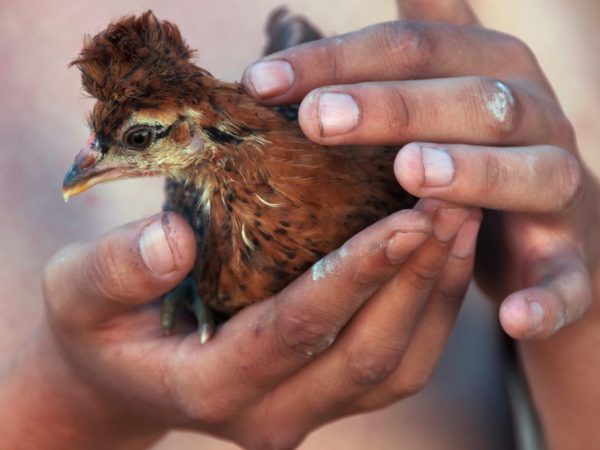The uniqueness of the Russian Crested chicken breed
Quite hardy and with strong immunity, the Russian Crested breed of chickens is one of the domestic agricultural pets most often bred on private farms. They are white and variegated.

Russian Crested breed of chickens
About Russian with a tuft
The roots of the Russian Crested breed of chickens go back to the Russian outback and has a century-old history. In European countries, the crested livestock from Russia is represented by a few specimens. There are slightly more Russian chickens and roosters in Asia.
Among domestic representatives, the Russian Crested is easy to recognize in photos and videos, due to its unusual appearance.
Belongs Russian white breed of chickens and the Russian crested breed of chickens to meat and meat directionbeing a good source of eggs while also producing good quality chicken meat.
The Russian crested breed of chickens appeared in the process of selection work, the purpose of which was to breed an unusual appearance of an agricultural bird, which also has a universal purpose and is able to withstand Russian frosts.
Russian pestles, rather active by their nature, do not show aggressiveness, but are rather emotional and loud. Many of them may have affection for their master.
Exterior differences
From the name of the variety, it immediately becomes clear why the birds were named that way. The head of hens is crowned with a luxurious crest, formed in the form of a small cap, and its presence is observed both in layers and in roosters. However, the crest in chickens, in contrast to roosters, is more developed and can be in the form of a straw sheaf or a helmet, it can be sticking out or spreading, slightly combed back. The cock's crest on the occipital region smoothly passes into a wide scruff.
In addition, the description of birds includes a number of distinctive exterior features according to the standards:
- large body with pronounced muscle relief, a wide, straight back and a slightly raised chest,
- slightly lowered wings adjacent to the body and a slightly upturned tail with developed braids,
- a slightly elongated head with a strong yellow or black beak curved downward,
- strong, featherless paws.
The plumage of Russian breeds of chickens with tufts can be varied: blue, gray, black, salmon shades from light to red. Most often there is a Russian crested breed of chickens where the feathers are white. Despite the color: whether the chickens are white or they have a black color, they are red or painted in blue - the plumage of the crested is always dense and dense.
Economic performance and benefits for breeding
The versatile breed is started by private agricultural farms in order to obtain chicken meat and eggs and justifies the hopes of its owners:
- the average carcass weight of a broiler rooster gains 3.5 kg, chicken - up to 2.2 kg,
- laying hens' egg production reaches 160 or more eggs in 1 year,
- each egg with a white or creamy shell weighs 55 g or more,
- oviposition in crested layers begins at 5-6 months of age.
Among the advantages that the Russian Crested chickens differ from the reviews are:
- high rates of egg fertilization,
- the instinct of incubation, laid down by nature and fixed at the genetic level, like kings,
- very high (more than 90%) rate of hatchability of chickens,
- endurance of birds,
- simple maintenance and care,
- interesting appearance of chickens.
As disadvantages, many breeders indicate a decrease in egg production as the bird grows up, which is typical not only for these, but also for other breeds of agricultural poultry. Many have another negative point - the need for periodic trimming of the chicken crest, although this is required in a few cases, while the cockerel may not be trimmed.
Breeding basics
Chubaten chickens, quickly getting used to the new conditions of keeping a variety of feed, became popular residents of domestic and foreign farms rather quickly. The vitality laid down in them at the genetic level does not create additional hassle for the owners when leaving and is limited by the standard set of rules for keeping poultry.
The Russian breed of chickens can be kept in the yard even in winter, without heating, lighting and on a meager diet, getting the minimum they should.
Today, farmers are trying to provide indoor conditions as comfortable conditions for keeping whites and other chickens. perches and nests, equip an artificial lighting and ventilation, cover the floor with high-quality bedding. All this directly affects the egg production of layers and affects the quality of hatched chickens. In the summer, chickens are transferred to the open air in aviaries.
The diet of the breed includes a standard set of products that are given to representatives of other breeds: grain, herbs, bran, ready-made feed mixtures.


